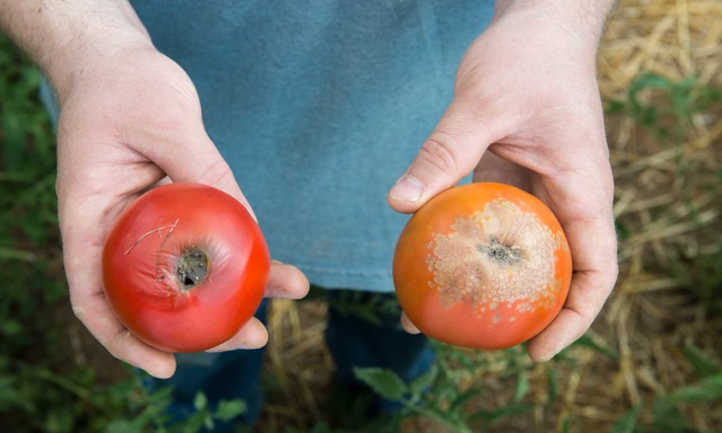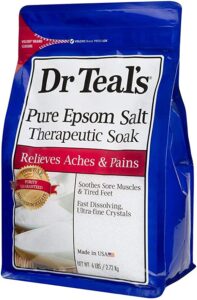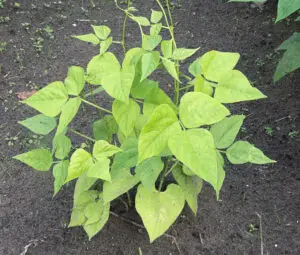Many successful gardeners use Epsom salt in their gardens for a variety of reasons. Perhaps the most popular reason is as a treatment for blossom end rot, a condition that can ruin produce. Others argue that the amendment is completely ineffective against the condition, making it a waste of time and money. So, which is it?
In this article, we will take a quick look at the basic science behind this practice to help you determine once and for all whether you should use Epsom salt to treat blossom end rot.
What is Blossom End Rot?
Blossom end rot (BER) is a condition that affects many of our favorite vegetables, most notably tomatoes and peppers, but also other vegetables like cucumbers, eggplant, melons, and squashes like zucchini. It is not a disease but rather a physiological disorder that is characterized by a water-soaked spot (also called a lesion) at or near the end of the fruit. Hence the name, blossom end rot. The spot will grow and become darker and somewhat leathery looking. Sometimes, a secondary fungal or bacterial infection will occur. Regardless of which vegetable crop it affects, the result is ruined produce. If you have experienced BER in your garden, you know how devastating this can be.
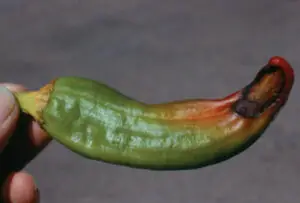
What Causes Blossom End Rot?
In order to properly treat blossom end rot, we need to know what causes it. Without a doubt, BER is caused by insufficient calcium. The insufficiency occurs for one or two reasons. First, BER can occur when there is a lack of calcium in the soil. Second, BER may occur because the plant is unable to take up the calcium that is present in the soil. Most often, the cause is due not to a lack of calcium in the soil but to the plant’s inability to absorb it.
If there is calcium in the soil, but the roots are unable to take it up, the problem is directly related to improper watering. In this case, to eliminate BER, you simply have to correct the watering issue. (You can learn more about blossom end rot, both its cause and its treatment in this helpful article.)
Now, let’s take a moment to understand exactly what Epsom salt is.
What is Epsom Salt?
In 1618, a cowherder named Henry Wicker located a pool of water in Epsom Common (near present day London, England). He noticed that his cows weren’t interested in drinking from the pool even though water was scarce due to drought conditions. What’s more, he later observed that the water tasted bitter and that, once it evaporated, it left behind a salt-like substance. This substance became known as Epsom salt.
Today’s Epsom salt, known for its many health benefits, is a naturally occurring compound made up of magnesium, sulfur, and oxygen. It does not contain any table salt (sodium chloride) or calcium.
Fact or Fiction
So, the question remains. Can Epsom salt, scientifically speaking, cure blossom end rot? Remember that BER is the result of a calcium deficiency, either because of insufficient calcium in the soil or because the plant is unable to take up calcium from the soil. The condition is not related to magnesium or sulfate whatsoever. (You can learn more about a magnesium deficiency in this helpful article.)
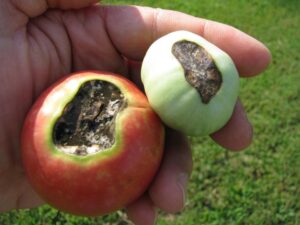
Epsom salt contains no calcium and therefore cannot prevent or alleviate BER because it does not replenish the calcium that is lacking in the soil (if this is the case), nor does it mitigate or regulate watering issues. On the contrary, adding Epsom salt to the soil as an amendment can actually make the condition worse. That is because magnesium will compete with calcium for a place both in the soil and in the plant. Therefore, if you add Epsom salt to your tomato plants, you are inadvertently giving the magnesium an unfair advantage and by default, displacing the much-needed calcium.
While Epsom salt may be a great home remedy, and it may also be able to correct other gardening problems, it cannot prevent, treat, or cure blossom end rot. Turns out this persistent BER gardening hack is fiction, not fact.
